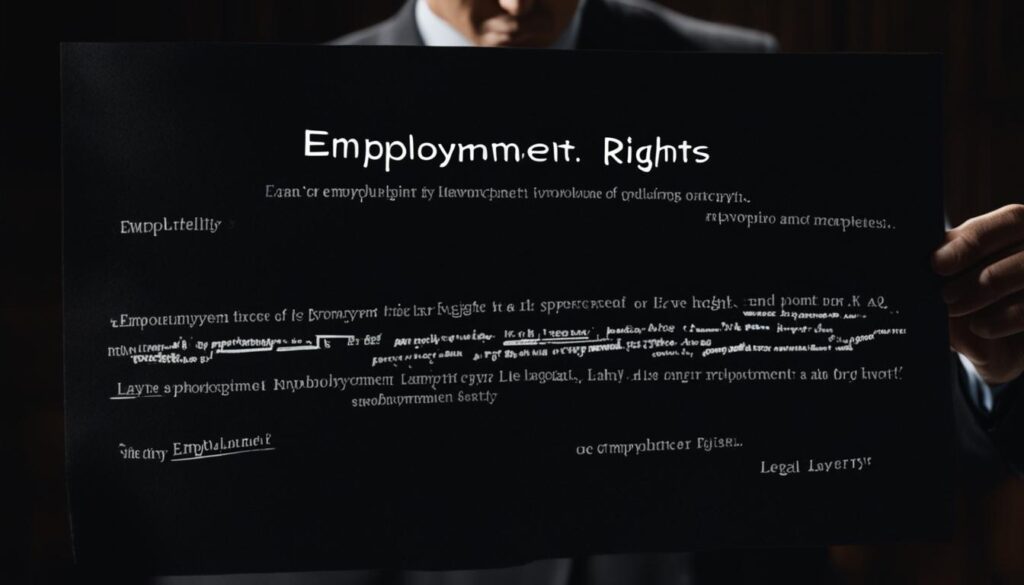Did you know that a staggering 59 million Americans performed independent contractor work in 2022? The rise of the gig economy has transformed the way businesses acquire talent, making it crucial to understand how to hire 1099 employees effectively.
The term “1099 employee” is a bit misleading. Independent contractors are not on your payroll. They’re self-employed and work for you on a contingent worker or freelance hiring basis. You give them an IRS 1099 form for their income taxes, not a W-2 form like your full-time staff gets.
As your business expands, you might need more help or specialized skills. Hiring non-payroll employees via contract staffing is a smart move. It lets you access the gig economy jobs without the cost or commitment of full-time positions.
Key Takeaways
- Independent contractors are self-employed individuals, not employees, despite the common term “1099 employee”.
- Businesses must provide 1099 forms to contractors for tax purposes, unlike W-2 forms for permanent employees.
- Hiring independent contractors allows small businesses to access specialized skills and support without full-time hiring.
- Clear job descriptions, interviews, and background checks are crucial when hiring 1099 employees.
- Proper documentation, including contractor agreements and IRS forms, is essential for compliance.
Understanding the Concept of a “1099 Employee”
The term “1099 employee” is a misnomer in the realm of independent contractors and the gig economy. While it’s widely used, it’s vital to note there’s no legal status as a “1099 employee.” This phrase actually stands for independent contractors, freelancers, or contingent workers who offer their services under contract.

What is a 1099 Employee?
A “1099 employee” doesn’t denote traditional employment but rather designates an independent contractor with specific skills or unique knowledge, hired by a company. The term “1099” points to the IRS tax form utilized for reporting the compensation of such contractors, freelancers, and the self-employed.
Differences Between 1099 Employees and W-2 Employees
The contrast between 1099 workers and conventional W-2 employees is pronounced. W-2 staff members are those deemed permanent, who get a W-2 form for tax filings and enjoy benefits such as health coverage, vacation time, and retirement plans. Alternately, 1099 contractors handle their tax responsibilities, don’t get employee perks, and wield greater work independence.
- Tax responsibilities: Employers withhold taxes from pay for W-2s, but 1099 contractors must manage their tax obligations themselves.
- Benefits: Benefits provided by the employer are exclusive to W-2 workers, contrasting 1099 contractors who do not receive such benefits.
- Work control: W-2 employees have their work more carefully controlled, unlike the greater work autonomy 1099 contractors enjoy.
- Payment method: A direct salary is how W-2 workers are paid, whereas 1099 contractors invoice for their services or use different payment methods.
Potential Legal Risks of Misclassifying Workers
Mistaking independent contractors for “1099 employees” and treating them as salaried staff can break employment laws. Doing this might provoke disastrous IRS audits or penalties. The IRS bases its worker classification on criteria such as behavioral control, financial control, and the working relationship type.
When to Hire 1099 Employees
Expanding your small business often means needing more hands. But, you might not be ready to hire full-time just yet. This is where engaging a 1099 employee part-time comes in. It lets you pay for work as needed and avoid the commitments of a permanent hire.

Benefits of Hiring Independent Contractors
Using independent contractors or freelance workers from the gig economy jobs market has its perks:
- You gain access to unique skills and expertise only when required.
- Overheads stay low compared to having full-time staff.
- Flexibility to adjust your alternative workforce according to workload is increased.
- Liabilities and paperwork are less than with permanent hires.
Scenarios Where Hiring 1099 Employees Makes Sense
Using 1099 workforce can fit many of your business’s needs. It works well for:
- Short or one-off projects such as designing a website, handling finances, or creating content.
- Filling gaps during busy times or when someone is on leave.
- Bringing in top-notch skills without a long-term commitment.
- Trying new positions or services before making them permanent.
Tapping into the talent of freelance hires helps you run your business better and more affordably. Plus, it lets you adjust your team as your needs change.
How to Hire 1099 Employees
As a business owner, you might need specific skills for particular projects. Hiring independent contractors or freelance workers is often the best approach. They’re known as “1099 employees.” But, it’s vital to follow the right steps and meet legal obligations when hiring 1099 employees.
Crafting a Clear Job Description
The start is creating a detailed job description. It should clearly state that the job is for an independent contractor or freelancer. Highlight key details like “contract,” “project-based,” or “gig economy jobs.” This helps set the right expectations.
Interviewing and Screening Contractors
After getting potential candidates, interviewing is key. Evaluate their skills and check if they suit the project. Pose questions that test their independence and time management. Ensure they can produce quality work on time.
Be upfront about the contract staffing during the interview. Make sure the candidate knows what’s involved.
Verifying Credentials and Background Checks
Proper credential and background checks are essential before hiring. Look at their references and portfolios. Online profiles can give you insights too. For some jobs, background checks might be needed.
Since independent contractors work on their own, they must be skilled and professional. It’s your job to verify this.
Formalizing the Working Relationship
After choosing your independent contractors, it’s vital to formalize your agreement. Doing so aligns with IRS rules and outlines expectations clearly for all involved. This ensures a smooth working partnership.
Drafting a Contractor Agreement
Creating a detailed contractor agreement is crucial. It must clearly define the project’s scope, deadlines, and payment. Additionally, it should include confidentiality requirements and how the contract can be ended. Such a document safeguards your business and enhances your relationship with your 1099 workforce.
Setting Up IRS Paperwork (W-9, 1099-NEC)
Prior to beginning work, your independent contractors should provide a W-9 form. This form includes their taxpayer ID and other key details. If you pay any contingent worker or consultant over $600 in a year, submit a 1099-NEC to the IRS. Remember, it’s crucial that the information on these forms matches to stay compliant.
While working with them, it’s key to treat independent contractors distinctly from regular employees. Avoiding commingling roles lowers the chance of being wrongly classified. This misstep could result in fines from the IRS and other authorities.
Transitioning from 1099 Employee to W-2 Employee
As your business grows, shifting from a 1099 independent contractor to a W-2 employee might be necessary. If the role of a contractor has evolved into a core position with fixed hours and exclusive dedication, it is a sign. This situation marks when you should reclassify them. Not doing so could result in penalties from entities like the IRS or state agencies for mislabeling them as independent contractors.
It is vital to keep contractor agreements under review. This is to ensure they are correctly labelled. False classification could lead to costly legal battles and other negative outcomes for your business. For example, it is critical to remember that January 31st is the deadline for issuing a W-2. This deadline underscores the significance of accurate worker classification.
When moving from a 1099 setup to hiring W-2 employees, waiting until the year’s end is often wise. This delay helps in a smoother transition and avoids many headaches. Luckily, Advanced Micro Solutions has tools for processing both W-2 and 1099 paperwork. These tools make transitioning easier, ensuring you are in compliance and making the process simple for all involved.




